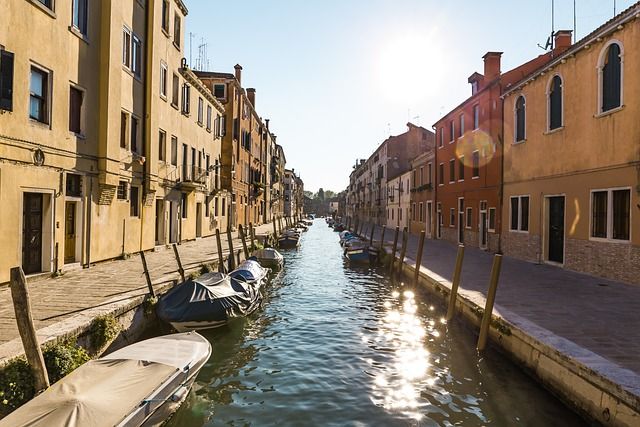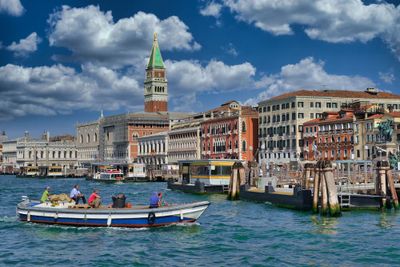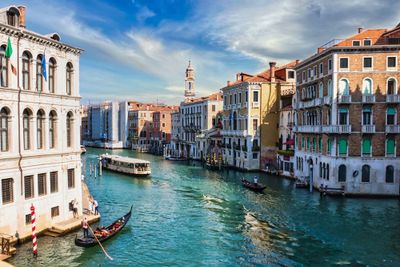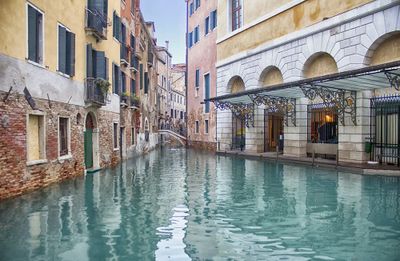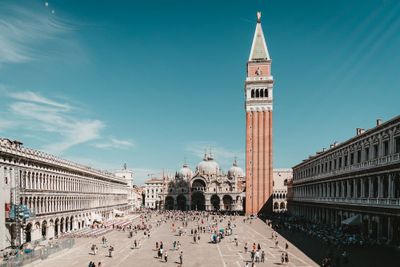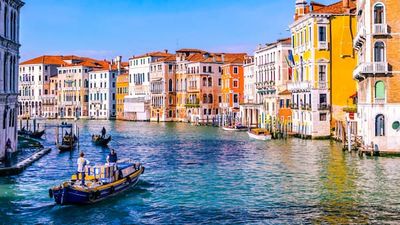Traveling through Venice, even if you use Maps, you might be confused by Venice street names.
Calli, salizada, fondamenta: all these words are not currently used in the Italian language, but they are just typical of Venice.
For this reason, since Venice Insider Guide wants to be your gateway to the city, we have decided to prepare this guide on the curious name of the streets and the squares in Venice.
Would you like to know more about Venetian toponymy? Let's start immediately.
Venice street names: all you have to know not to get lost in the city
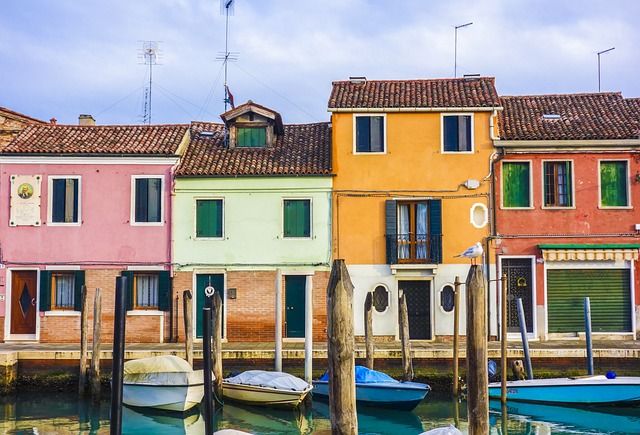
In our website we have written many times about the Sestieri which, you now know, are the six districts of the city. However, not only the districts have curious Venetian names.
Squares, streets and particular places which we will see later in the article share a very curious name.
Nowhere else in Italy you will find this kind of names: only here. If you want to say "street" you will translate it as "strada", "square" as "piazza". However, here things are a little different. Additionally, some Venetian words cannot be translated.
So let's find out all Venice street names you should know to travel around the city.
"Strada": the "street"
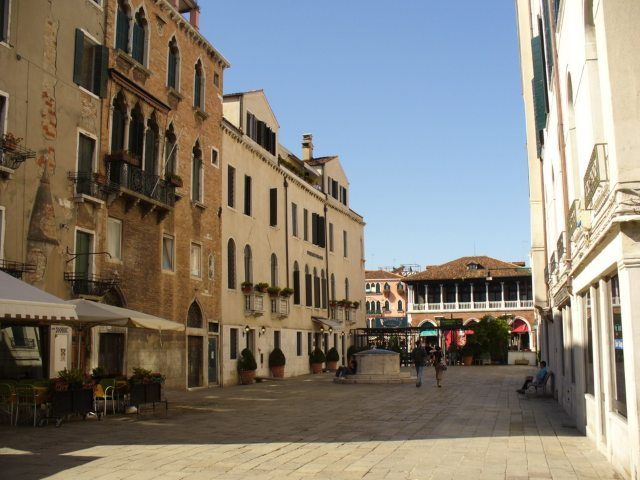
We have just said there are no streets in Venice. However, there is just one and it is called "Strada Nova" or "New street". You will find that it begins close to the train station and it ends somewhere close to the Rialto bridge.
"Piazza": the "Square" or the "Campo"?
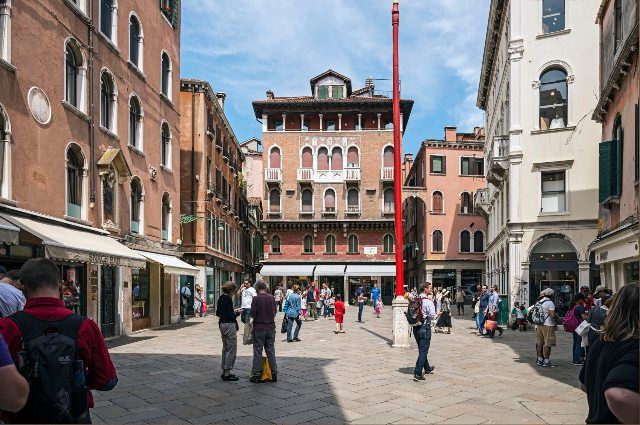
You probably already know that there is one actual square in Venice. The one and only is the elegant Piazza San Marco. All the other places that we would call squares are actually "campi".
Campo San Polo, Campo Santa Margherita: they are all squares. Why are they called with a name coming from the agricultural world? "Campo", in fact, means "field" in Italian.
At the time of the first settlements in the lagoon, Venice was a collection of more or less emerged, unconnected "islets". Each islet housed a residential nucleus.
The dwellings were built close to the water with the entrances facing the canal. Behind the houses, toward the interior of the islet, were the vegetable garden and cultivated field, which was considered precisely "the back" of home.
That's why today the squares are still called "campi" (the plural version of "campo"). When the "Campo" is particularly small it is called "campiello". The most famous is probably the Campiello del Remer, very close to Rialto.
"Calli": the Venice street name
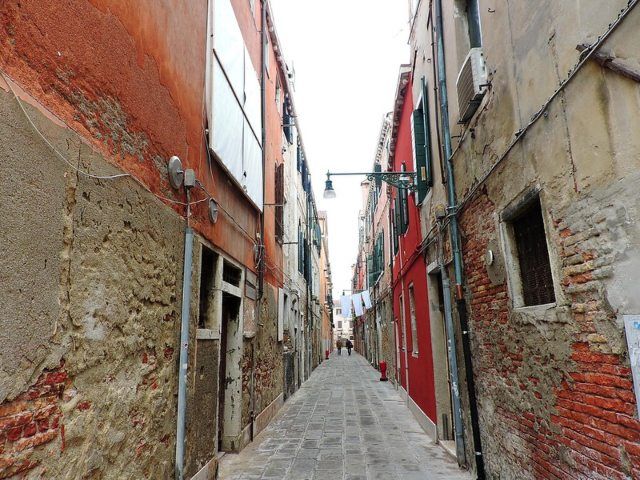
Calle del Forno, Calle Larga, Calle della Madonna, Calle Varisco: these are all name of Venetian streets.
The word comes from the Latin "callis", which means path.
Not all the calli are similar to each other. There are streets that are larger (the "calli larghe") and streets which are narrower. Sometimes they have a dead end and they are called "rami" (which means "branches").
"Salizada": the most important calli
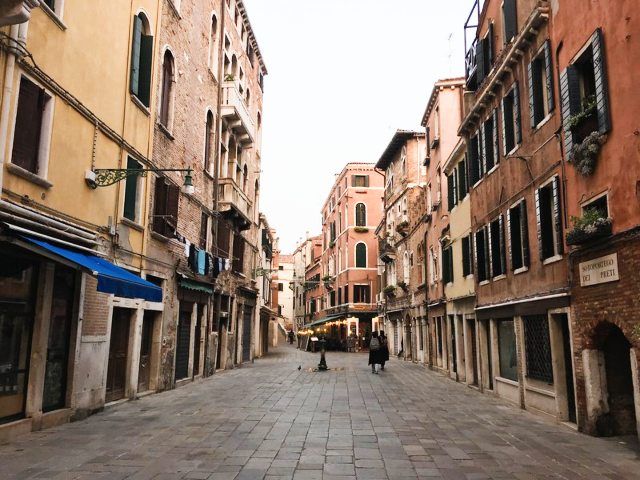
If you are walking through a "Salizada" you are walking through one of the most important calli of the city. They were in fact paved streets, covered with classic gray paving stones.
All other streets had terracotta brick paving arranged in a herringbone pattern. Salizada San Lio, Salizada San Pantalon, Salidaza San Antonin are some examples.
"Ruga": the longest calli
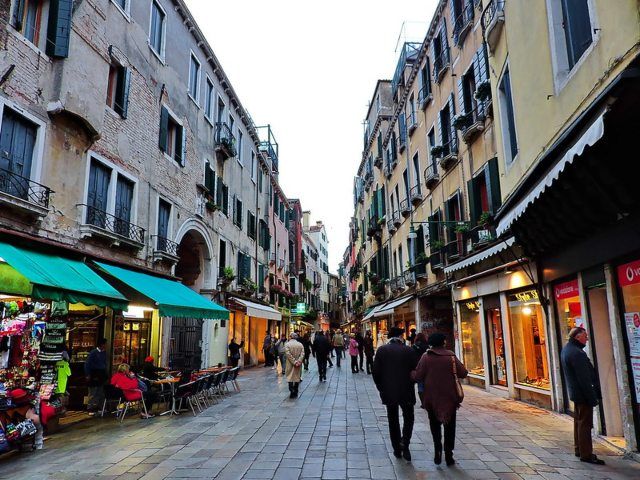
If you find a calle which is particularly important and long it can be called "Ruga".
If you visit Venice, you will surely, sooner or later, pass through Ruga Rialto, Ruga degli Oresi, and perhaps Ruga Giuffa. These are some of the most important places for valuable shopping.
"Fondamenta": the streets close to the canals
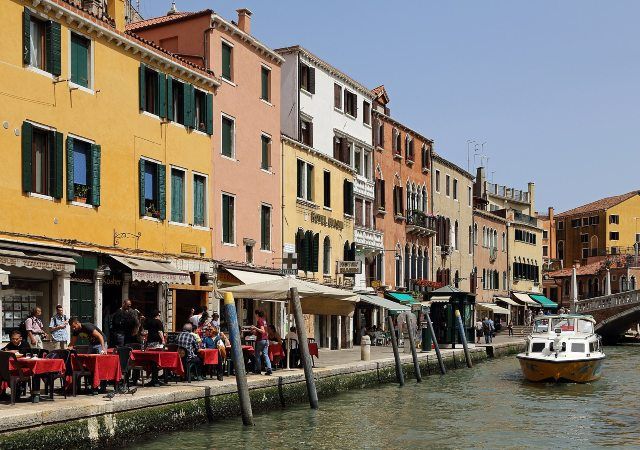
It is the stretch of road that runs alongside a canal or stream. Basically, it is a calle bathed on one side by water.
There are many characteristic ones in Venice and they are symbolic of the coexistence of land and sea. Some may have wrought-iron parapets with Istrian stone columns; others have no protection at all. Be careful not to lean out too far to admire the view.
Some of the most famous ones are Fondamenta delle Zattere, Fondamenta della Misericordia and Fondamenta San Biagio.
"Rio Terà": what is it?
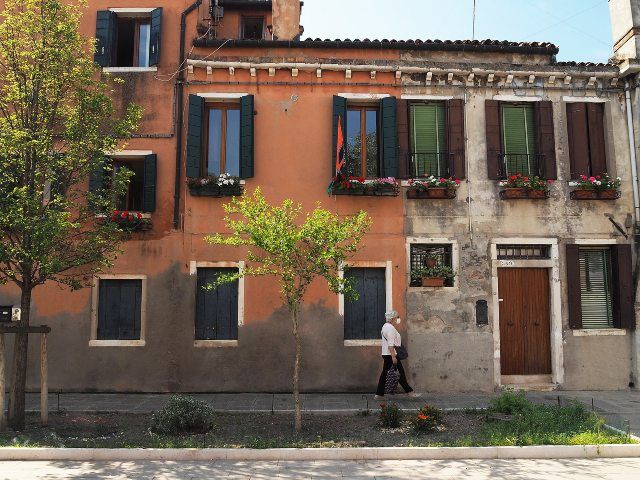
Have you read the words "rio terà" anywhere? It is a pedestrian road carved out by burying an existing canal. Rio Terà dei Assassini in the Sestiere di Santa Croce is only one of the most famous, but there is also the terrible Rio Terà dei Assassini near the Teatro La Fenice.
"Sotoporteghi": the underpasses
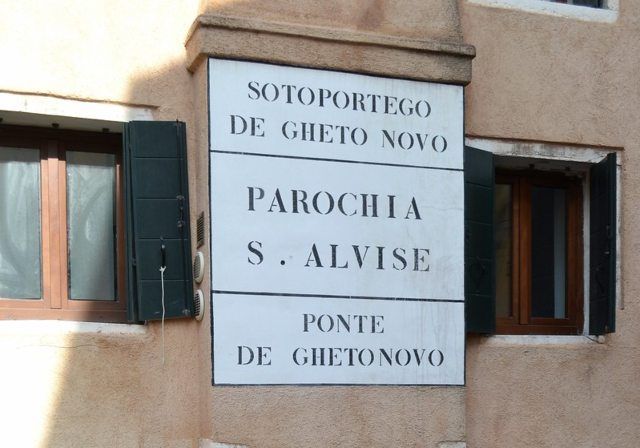
Among Venice street names you will find also the "sotoporteghi", which simply are the underpasses. You can find them almost anywhere in Venice.
One of the most famous ones is actually in Cannaregio district and it is the Sotoportego de Gheto Novo, the gateway to the Jewish Ghetto.

